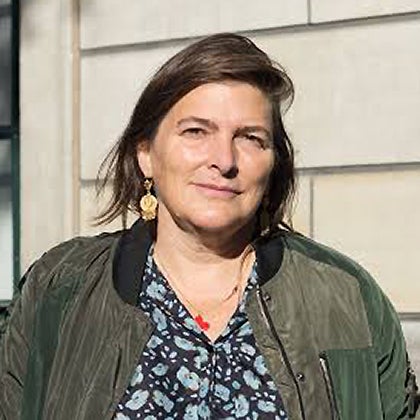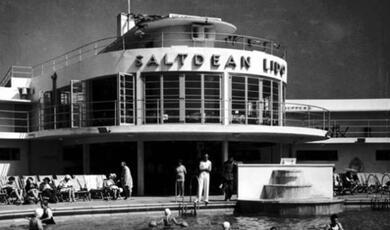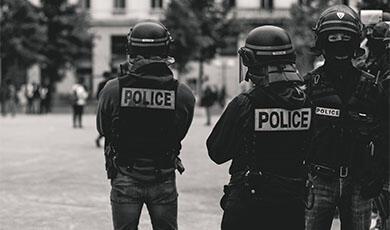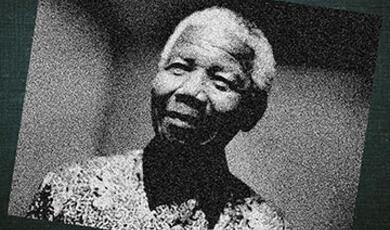The Value of Public Space
Share
- Details
- Text
- Audio
- Downloads
- Extra Reading
Creating new meaningful public realms faces many challenges.
Some see public space as just a setting for architecture. Others see spaces between buildings as a channel for footfall and its associated spending. For publicly funded spaces, ‘austerity’ means designing out maintenance and risk. All tend towards the neutral, the generic and empty.
With reference to recent and historical case studies, the lecture will explore an alternative approach which sees the public as the clients in public realm projects. Designing with specificity to site and situation creates spaces which are open to appropriation by many.
From the particular can come the universal.
Download Text
The Value of Public Space
Professor Liza Fior
28 January 2025
As the late Katherine Shonfield put it, the public realm is a place we experience democracy – but it is also where we practise it.
Public space does not just come into being – it is not mere leftover space between buildings. It is made by proclamations and regulations but also by use, imprinting habits and invitations for others which can last for centuries, and by the passionate protection of it as a shared resource. There are various explanations for spaces which do not invite lingering: perhaps designed for intentional emptiness to give status to a building, perhaps thanks to building regulations linked to adjacent development, or corralled as an extension of commercial floor space.
It’s easiest if use comes first.
I give the example of a road beside a school being rerouted and a new square made by this adjacency, the UN Article 31 rights of children to play is respected. Through habits of use, spaces, or the objects in them become inscribed with permissions.
Buildings themselves can play their part. Town hall steps become a site for performance, whether weddings or protest. Buildings can become generous neighbours, whether casting light beyond their building line or like the National Gallery during the pandemic: closed to visitors, the institution continued to take care of the raised lawns around its perimeter, as Londoners with the city left for them, took an afternoon nap.
Useful, usable spaces need publics who advocate and fight for them – and that is not necessarily those who own adjacent property.
Giving status to use means protecting against monocultures. I start with historical examples. Common land was not a free for all.
Ownership was separate from rights of use for specific activities, some overlapping and others coexisting. In Moorfield’s, areas for pasture, for washing and airing clothes were crisscrossed by paths people used to “take the air”.
In Lincolns Inn Fields, there was fencing to keep animals in and a turnstile to allow pedestrians out, a piece of urban furniture that allowed more than one thing to happen there. Permission to build housing in Lincolns Inn came with a requirement to protect and take care of the fields, a quid pro quo which continued as more houses were built. But as they were built, pressure grew for enclosure and to restrict who used it, with aspect taking precedence. Railings were installed. The square only returned to public use by degrees, negotiated by asking permission – as Octavia Hill did - for the seemingly harmless, a one-off flower show or bringing “deserving children” to play for a day.
Use can change the meaning of a space and expectations of how it might be used; temporary uses inscribe possibilities for the future.
I shared a series of examples from the work of my practice muf architecture/art where we looked to the 2 users of the spaces we were designing to act as if they were our clients, recognizing that it is the bespoke which allows for ease of appropriation rather than the pretended neutrality of a plaza taking up space.
© Professor Liza Fior 2024/5
References and Further Reading
Matthew Carmona (2022) The “public-isation” of private space – towards a charter of public space rights and responsibilities, Journal of Urbanism: International Research on Placemaking and Urban Sustainability, 15:2, 133-164, DOI: 10.1080/17549175.2021.1887324
Elke Krasny and Architekturzentrum Wien, eds. Hands-On Urbanism 1850-2012.
The Right to Green. Hongkong: mccm, 2012 The London Square, Todd Longstaffe Gowan, Yale 2012
More about muf’s work: www.muf.co.uk
References and Further Reading
Matthew Carmona (2022) The “public-isation” of private space – towards a charter of public space rights and responsibilities, Journal of Urbanism: International Research on Placemaking and Urban Sustainability, 15:2, 133-164, DOI: 10.1080/17549175.2021.1887324
Elke Krasny and Architekturzentrum Wien, eds. Hands-On Urbanism 1850-2012.
The Right to Green. Hongkong: mccm, 2012 The London Square, Todd Longstaffe Gowan, Yale 2012
More about muf’s work: www.muf.co.uk
This event was on Tue, 28 Jan 2025
Support Gresham
Gresham College has offered an outstanding education to the public free of charge for over 400 years. Today, Gresham College plays an important role in fostering a love of learning and a greater understanding of ourselves and the world around us. Your donation will help to widen our reach and to broaden our audience, allowing more people to benefit from a high-quality education from some of the brightest minds.


 Login
Login







